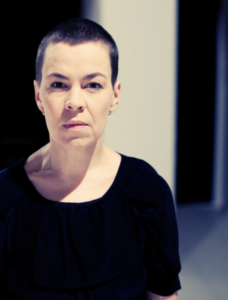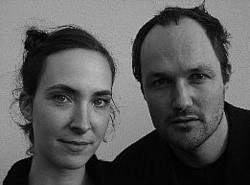
Keynote Speakers

Ene-Liis Semper (b. 1969) is an Estonian video and installation artist and theatre director. Semper is one of the most internationally acknowledged Estonian contemporary artists. Her works almost always involve a kind of duality, maintaining a precisely measured cognitive balance between seriousness and irony. The artist interacts with the viewer through testing the limits of both physical and psychological space. Semper’s video works have been shown in a number of exhibitions around the world including Manifesta (2000) and the Venice Biennale (2001).
In 2004, together with Tiit Ojasoo Semper founded Theatre NO99, becoming its artistic directors, as well as the authors of original texts for most of its productions
Theatre NO99 (2004-2019) was a serial work of contemporary art.
At the beginning of it was an idea that considering the inherently finite nature of time and its finality, time should instead be measured backwards. This served as the impetus for Tiit Ojasoo and Ene-Liis Semper’s idea for a theatre where only 99 stage productions should open and which thus moves along sequential numbers to zero, towards oblivion.
Theatre NO99 was a platform for different types of works of art. Over the years many of its productions achieved considerable success at the most prestigious European festivals, including Wiener Festwochen (2009, 2010, 2014), Festival d’Avignon (2015), Holland Festival (2015), Venice Theatre Biennale (2017) and NET Festival Moscow (2018).
In 2015, Theatre NO99 won the main prize Golden Triga at the Prague Quadrennial, and in 2017 the European Theatre prize New Theatrical Realities.
Ene-Liis Semper is a recipient of numerous awards for directing, as well as for her work in the field of Fine Arts, including Estonian National Culture Prize (2002, 2008, 2011), Cultural Endowment annual prize (1997, 2001, 2011, 2018), Kristjan Raud Prize and Hansabank Culture Prize (both 2002). Together with Tiit Ojasoo, she has also won the Best Director of the Year on several occasions.

Ida Müller (b. 1977) is a German scenographer and director, Vegard Vinge (b. 1971) is a Norwegian director and performance artist. Their artistic duo rank among the most influential theatre makers in Europe today. Dedicating their works exclusively to Henrik Ibsen plays, they also reference an immensity of other artworks – from Shakespeare to Verdi to Paul McCarthy to South Park to A-ha. Their marathon performances create moments of wild excess, extreme theatricality and enormous tenderness, traceable back to an ever-present tension at their root, between meticulous precision and profound improvisation, making their work both unpredictable and coherent, equally devoted to their self-contained artistic universe as to the ever changing now of their performances.
The duo has achieved fame and recognition with their Ibsen productions since 2006. They create poignant and painstakingly detailed reimaginings of Ibsen’s domestic settings reflecting contemporary postmodern culture. In Müller’s and Vinge’s stagecraft, cartoon-like figures inhabit spaces of seemingly endless citationality and obsessive references to pop culture. The duo’s aesthetic is characterized by meticulously choreographed movements, alienating mask-voice-and sound loops, by transgressive outbursts of violence, improvisation, and foremost, by moments of sublime transcendence. Consistently homages to the artists that have inspired them, Müller-Vinge‘s Gesamtkunstwerk use Ibsen’s dramas as a starting point for monumental reworkings of the Ibsen canon that shatter the boundaries of theatrical convention and serve as uncompromising commentaries upon contemporary life.
Müller and Vinge play with many levels and philosophies in their work. There work can be interpreted from many different angles: philosophical, historical, pop cultural, high cultural, etc. The work of Müller and Vinge emphasizes the process rather than the end result, they rethink the position of the performer and the audience, and they bring into focus space and time relationships. Their exceptionally loosely structured performances last for 8 to 18 hours.
Their maximalist and extremist aesthetics have earned them multiple awards and invitations to Europe’s most prestigious stages, including their former artistic home, The Volksbühne Berlin and several invitations to the prestigious Theatertreffen festival in Berlin.
Selection of works:

A Doll’s House, Ibsen, Grusomhetens Theatre Oslo, 2006;
Ghosts, Ibsen, Black Box Teatre, Oslo, 2007;
The Wildduck, Ibsen, The Bergen International Festival, 2009;
John Gabriel Borkman, Ibsen, Volksbühne Berlin, 2012 (invitation to Theatertreffen);
12-Spartenhaus (after Ibsen’s Enemy of the People), Volksbühne Berlin, 2013 (invitation to Theatertreffen);
Nationaltheater Reinickendorf, Berliner Festspiele, 2017 (invitation to Theatertreffen);
Panini – BoysRoom (after Ibsen’s Peer Gynt), Bergen International Festival, 2018
Hedda Gabler, Ibsen, Det Norske Teatret, Oslo, 2022


